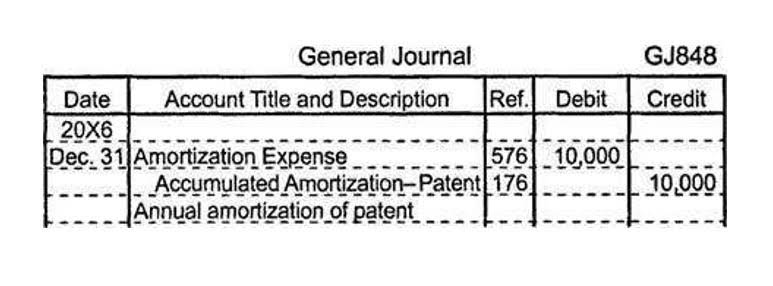Content
- Change in Working Capital Formula
- How Working Capital Impacts Cash Flow
- Summary Example of NWC
- How to Calculate Changes in Working Capital
- How To Calculate Change In Working Capital? – Detailed Analysis
- Is Working Capital An Asset?
- Step no. #1 = Calculate total current assets of current and previous year.

Harold Averkamp has worked as a university accounting instructor, accountant, and consultant for more than 25 years. He is the sole author of all the materials on AccountingCoach.com. The short answer is that you should follow what the company does, and you shouldn’t worry about placement as long as the item correctly factors into Cash Flow from Operations . For both companies, the Change in WC is a fairly low percentage of Revenue, which tells us that it’snot that significant in either case. It is a bit higher for Zendesk, so it’s slightly more important there. When the company finally sells and delivers these products to customers, Inventory will go back to $200, and the Change in Working Capital will return to $0. But Company A is in a stronger position because Deferred Revenue represents cash that it has collected for products and services that it has not yet delivered.
This measurement is important to management, vendors, and general creditors because it shows the firm’s short-term liquidity as well as management’s ability to use its assets efficiently. A prepaid expense is an upfront payment for an expense, such as an annual insurance payment, that a company has not yet incurred. A company records prepaid expenses as part of current assets and reduces the amount in portions as it uses up the expense. A company records any portion of a prepaid expense that it expects to take longer than a year to use in the long-term assets section of the balance sheet. Subtract remaining liabilities from the difference you calculate between current assets and accounts payable. If the change in net working capital presents a positive value, it means the assets of a firm is in excess of current liabilities. This can be seen as that the firm made purchases to increase current assets in the current period, leading to the outflow of cash.
Change in Working Capital Formula
By doing this, the debt will no longer be included in the calculation of your NWC, aside from the total portion of principal due in one year. This will help increase your NWC by lowering the number of payments that are due. The NWC ratio measures the percentage of a company’s current assets to its short-term liabilities. Similar to net working capital, the NWC ratio can be used to determine whether you have enough current assets to cover your current liabilities. Working Capital measures a firm’s ability to meet short-term liabilities, or short-term obligations.

Firm B owes $4,000 to their suppliers, It will have to pay that amount of money in future. Yet get back to the firm A, despite the same current liabilities, they have the deferred revenues of $3,000. Tt just has $1,000 as a payable, while it has collected $3,000 upfront for the undelivered services/products.
How Working Capital Impacts Cash Flow
These metrics enable analysts and investors to gauge a company’s performance, how its cash flow performs. Though the analysis doesn’t show the big picture, you can evaluate the firm’s performance to a certain extent. Current Liabilities are the total value of current liabilities presented in a firm’s balance sheet. Previously, Wal-Mart kept having to pay for inventory faster than it was paying its bills.

If anything meaningful, it means lots of capital is being tied up and less cash is available for other strategic cash flows, such as M&A div share buy back. By definition, Net Working Capital does include cash as it is defined as Current Assets – Current Liabilities. If you want to use it as an input in a DCF valuation, which I suspect is the change in net working capital case, cash is usually netted out as we are valuing the operating assets of the company. If you don’t have inside info about the company, it’s safe to assume that all of the cash is just earning its fair return , i.e. it’s in the bank. If you have some additional info or extrapolate, you can assume some % as operating cash and the rest excess.
Summary Example of NWC
Now, the company has an option to either keep it as a reserve or invest it in some project. Similarly, if every year you get a positive figure, you will gain profits every year.
- It tells whether the company has how much capital to fund different activities in day to day course of the business.
- If you made a sale, but didnt collect the cash that is a use of cash- or the income you recognized on the income statement wasn’t cash income and needs to be adjusted.
- Cash is a current asset and counts toward your net working capital.
- Again, refinancing and debt consolidation can have a negative financial impact in the long term, as they can result in higher interest over time.
That’s why you have to understand what these numbers means, and how they support financial analysis. Just learning by heart the formula could possibly lead to the misunderstanding of the concept. As mentioned above and you might know, Net Working Capital enables analysts and investors to gauge where a company is positioning. However, a negative net working capital does not always mean the company is not looking great.
How to Calculate Changes in Working Capital
Since the change in net working capital has increased, it means that change in current assets is more than a change in current liabilities. https://www.bookstime.com/ It means that the company has spent money to purchase those assets. So this increase is basically cash outflow for the company.
- As you all know, the word gross means the total of all items and net means some items get deducted from the list.
- A company records prepaid expenses as part of current assets and reduces the amount in portions as it uses up the expense.
- We’ll review the concepts, the formulas, and walk through several examples.
- This is a source of cash, though suppliers may increase prices in response.
- The net working capital is the total of all current assets and current liabilities.
- Current liabilities are liabilities other than long-term liabilities.
From an accounting standpoint and definition, that’s correct and what the following articles and explanations are referring to. Finally, the Change in Working as calculated manually on the Balance Sheet will rarely, if ever, match the figure reported by the company on its Cash Flow Statement. So, if the company somehow classifies these items within Working Capital, remove and re-classify them; they should never affect Cash Flow from Operations. The Change in WC has a mixed/neutral effect on Best Buy, reducing its Cash Flow in some years and increasing it in others, while it always increases Zendesk’s Cash Flow. A better definition is Current Operational Assets minus Current Operational Liabilities, which means you exclude items like Cash, Debt, and Financial Investments. The Change in Working Capital tells you if the company’s Cash Flow is likely to be greater than or less than the company’s Net Income, and how much of a difference there will be. A negative CHANGE in NWC and a negative NWC are two different things.
